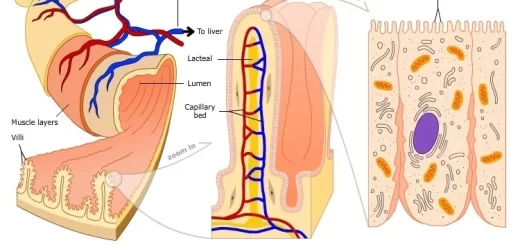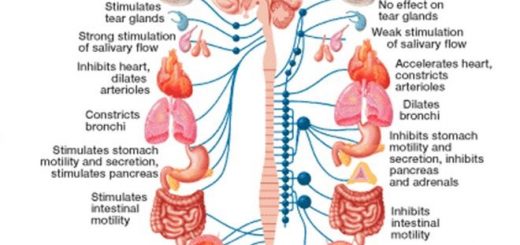Cell division types, Mitosis, Meiosis, Reductional division and Equatorial division
The cell division occurs as part of the larger cell cycle, In the eukaryotes, there are two kinds of cell division: the vegetative division, where each daughter cell is identical to the parent cell (mitosis), and the reproductive cell division, where the number of chromosomes in the daughter cells is reduced by half to produce haploid gametes (meiosis), Meiosis results in four haploid daughter cells.
Cell division types
The cell division is the process in which the parent cell divides into two or more daughter cells, An essential feature of the living cells is their ability to divide. Two types of cell division exist, mitosis and meiosis.
Mitosis
Mitosis means the division of the somatic cell into two daughter cells identical to the mother cell. Mitosis is included in the cell cycle and it is essential for growth and development of the organism as well as the renewal and repair of its cells. Mitosis could be divided into the following stages:
Prophase
- The nucleolus disappears.
- Gradual condensation of nuclear chromatin gives rise to 46 rod-shaped short d-chromosomes.
- Each chromosome is formed of 2 sister chromatids joined together at the centromere. Each chromatid is made of a DNA molecule.
- Each pair of centrioles migrates to opposite poles of the cell forming the mitotic spindle in between.
- The nuclear envelope breaks up into small vesicles.
Metaphase
The 46 d-chromosomes become maximally condensed and are aligned at the equatorial plate of the cell. Each pair of sister chromatids is parallel to the equator of the cell and is attached to the microtubules of the mitotic spindle at the kinetochore.
Anaphase
Division of the centromere results in the separation of the sister chromatids from each other. Every 46 chromatids migrate toward the opposite poles of the cell. In late anaphase, a constriction (cleavage furrow) develops at the equatorial plate of the cell membrane.
Telophase
The mitotic spindle disappears and the nucleolus reappears. The chromosomes start uncoiling and become organized into the interphase chromatin (46 s-chromosomes). The nuclear envelope is reformed around them at each pole.
After the division of the nucleus, division of the cytoplasm (cytokinesis) occurs, the cleavage furrow becomes deeper due to the formation of a contractile ring of microfilaments until it divides the cytoplasm and its organelles in half resulting into two daughter cells.
Meiosis
This type of cell division occurs in germ cells and results in the formation of gametes (sperms in males and ova in females). Meiosis ends with the formation of 4 daughter cells, each contains 23 s-chromosomes (haploid number). After fertilization, the diploid number is restored in the embryonic somatic cells. It consists of two successive divisions, without an intervening S phase.
First meiotic division (reductional division)
It results in the reduction of the number of chromosomes.
Prophase I
- It is an extended phase, during which paring of the homologous chromosomes occurs forming tetrads.
- It is preceded by interphase with an S phase, in which the chromosomes are replicated.
- Crossing-over occurs between the chromatids of the homologous chromosomes so that each homologous chromosome in a tetrad is no longer solely paternal or maternal but a mixture of both.
- At the end of this stage, the nucleolus and the nuclear envelope disappear and the mitotic spindle is formed.
Metaphase I: the 23 tetrads arrange themselves at the equatorial plate of the cell.
Anaphase I: the centromeres do not divide at the metaphase plate, consequently a member of each homologous pair moves separately towards one of the opposite poles of the cell.
Telophase I: cytokinesis occurs, this results in two daughter cells each containing the haploid number as 23d-chromosomes.
Second meiotic division (equatorial division)
It is very similar to mitosis but is not preceded by an S phase of DNA replication. The daughter cells from the first meiotic division go into meiosis II with 23d-chromosomes each.
In metaphase II: each chromosome lines up individually at the equatorial plate of the cell.
In anaphase II: the centromere splits so that each of the two chromatids goes separately to one of the opposite poles of the cell.
Phases of Meiotic cell division (Meiosis), Nanotechnology & cancer treatment
Cells types, Chromosomes, Cell division, Phases of mitosis division & Liver Transplantation
Regulation of the cell cycle, DNA synthesis phase, Interphase & Mitosis
Cytoplasmic organelles, Ribosomes & Endoplasmic reticulum function, structure & definition
Cell Structure, the function of Golgi apparatus, Endosomes & Lysosomes
The function of Cytoplasmic organelles, Mitochondria, Peroxisomes & Cytoskeleton
Nucleus components, function, diagram & classification of chromosomes



